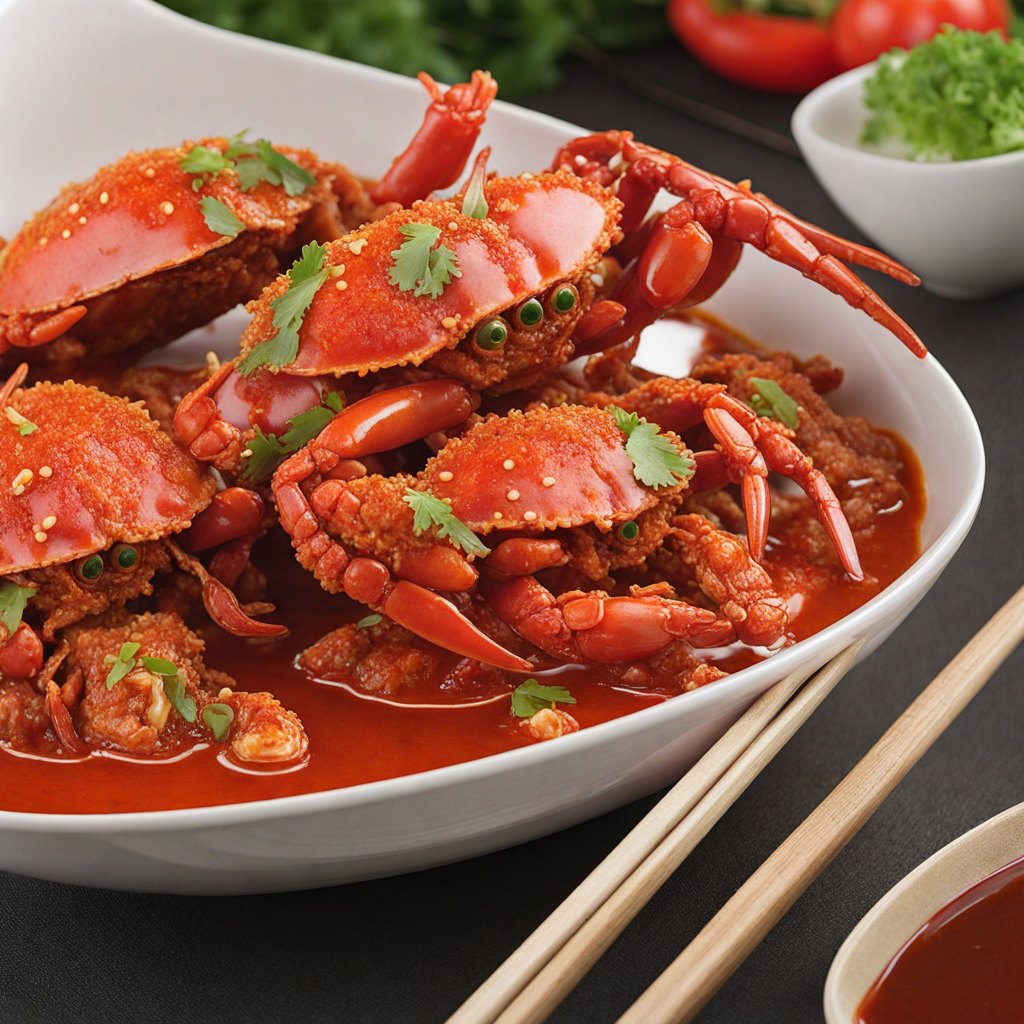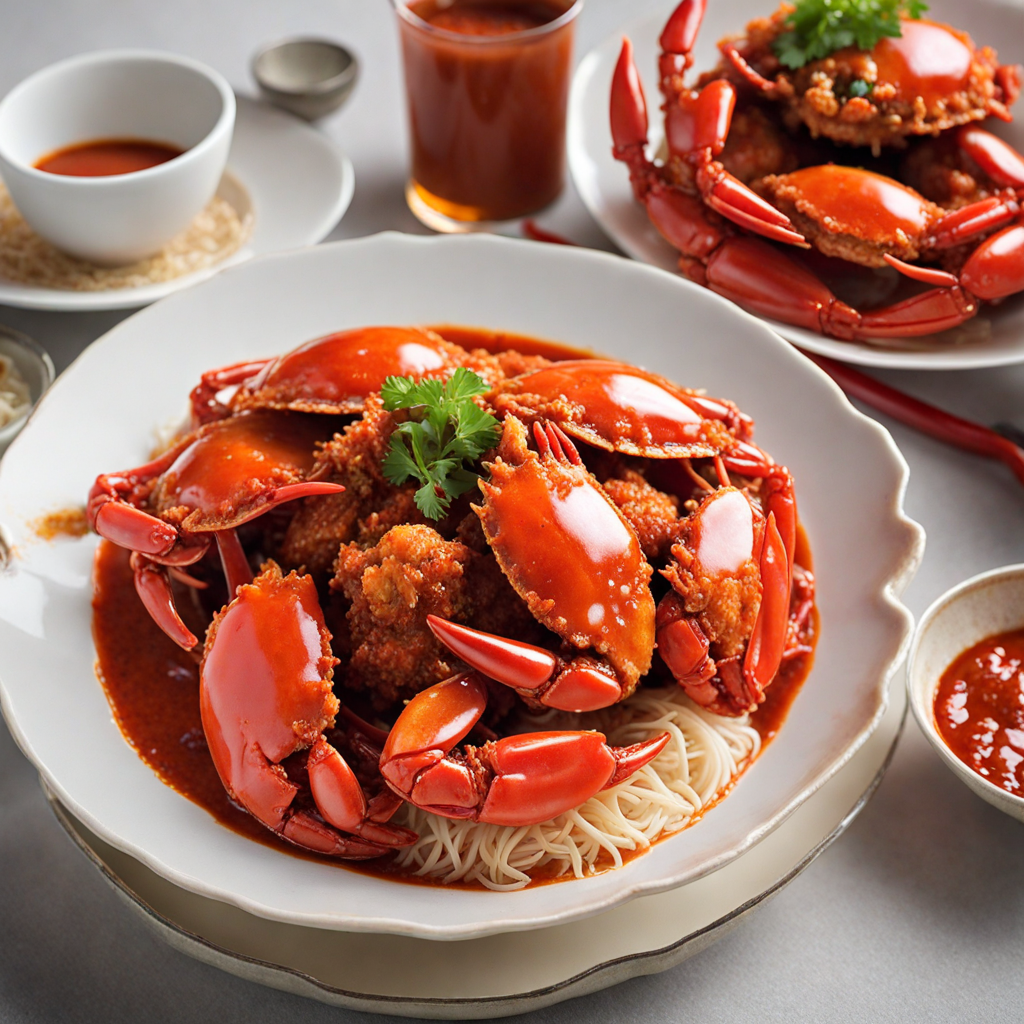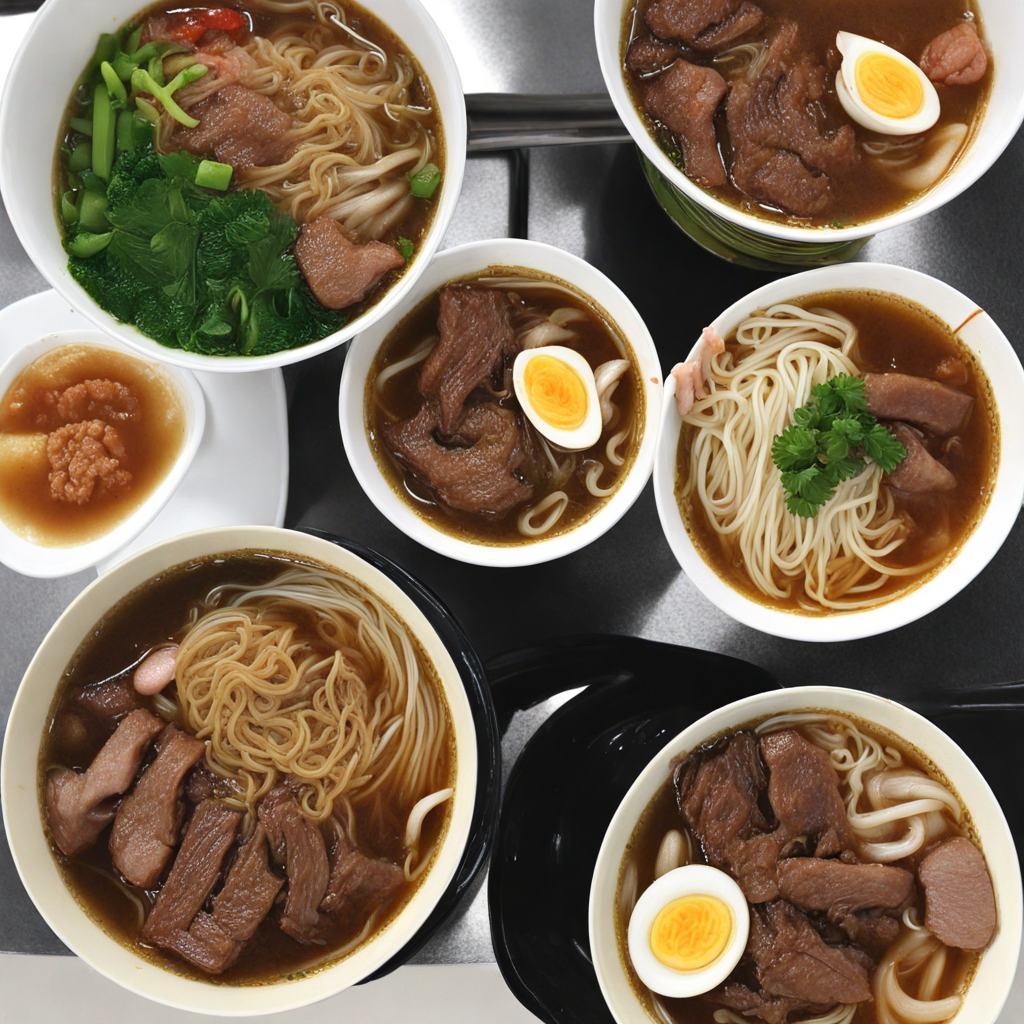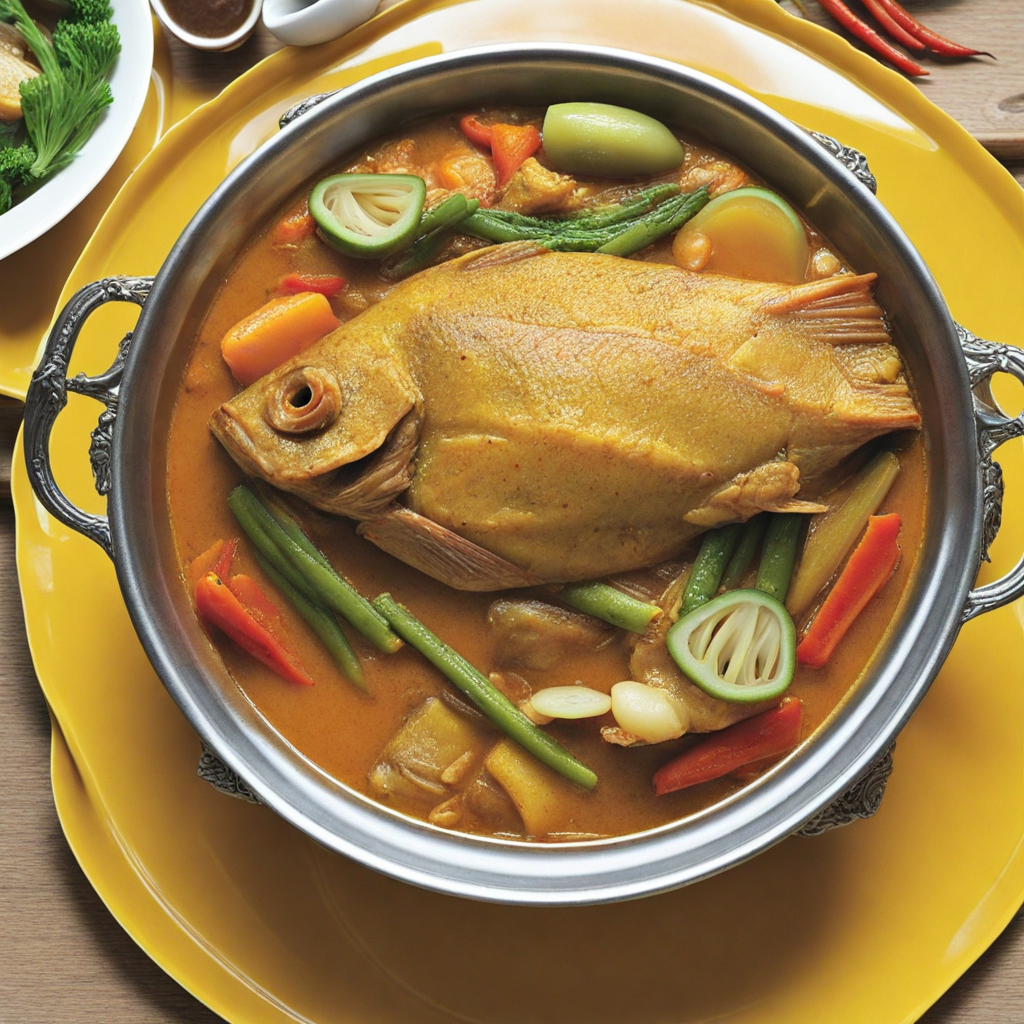Chilli Crab
Chilli Crab is a signature dish that beautifully encapsulates the vibrant flavors of Singaporean cuisine. This iconic seafood dish features succulent, sweet crab that is typically stir-fried in a rich, tangy tomato and chili-based sauce. The sauce is a perfect balance of sweetness and spiciness, infused with garlic, ginger, and a hint of vinegar, creating a complex flavor profile that tantalizes the taste buds. The color of the dish is a vibrant red-orange, making it not only delicious but visually appealing as well, often served alongside a side of fried mantou (buns) to soak up the luscious sauce. When you dive into a plate of Chilli Crab, the first bite reveals the tender, juicy meat of the crab, which is complemented by the thick, velvety sauce that clings to every morsel. The heat level can vary, but it generally strikes a harmonious balance that leaves a pleasant warmth without overwhelming the palate. The dish often includes a medley of spices such as chili paste, soy sauce, and a touch of sugar, which elevates the overall experience, making it a true celebration of flavors. Chilli Crab is not just a meal; it's an experience that brings people together, often enjoyed at bustling seafood restaurants where sharing is encouraged. The joy of cracking open the crab shells and savoring the flavors is enhanced by the communal atmosphere, making it a must-try for anyone looking to explore Singapore's culinary landscape. Pair it with a cold beer or some light, refreshing drinks to further enhance your dining experience, and you'll understand why Chilli Crab is beloved by locals and visitors alike.
How It Became This Dish
The History of Chilli Crab (辣椒螃蟹): A Culinary Icon of Singapore Chilli crab, known as 辣椒螃蟹 (làjiāo pángxiè) in Mandarin, is not just a dish; it is a symbol of Singaporean culinary identity, reflecting the rich tapestry of the nation’s multicultural heritage. This beloved seafood dish, characterized by its sweet and spicy tomato-based sauce, has become synonymous with Singaporean cuisine, drawing locals and tourists alike into the vibrant world of its flavors. To understand the significance of chilli crab, we must delve into its origins, cultural importance, and evolution over time. #### Origins: The Birth of a Culinary Delight The origins of chilli crab can be traced back to the 1950s in Singapore, a time when the nation was a melting pot of cultures due to its strategic location as a trading hub. The dish is believed to have been invented by the pioneering chef and entrepreneur, Cher Yam Tian, at her humble seaside stall in the East Coast area. Cher, who was originally from Hainan Province in China, started her culinary journey by selling steamed crabs. The innovative transformation of the dish came when Cher decided to incorporate her own recipe for a sweet and spicy sauce made from a blend of tomato, chili, garlic, and eggs. This fusion of flavors was inspired by the local tastes and ingredients available, showcasing the influence of Chinese culinary techniques while embracing local flavors. The dish quickly gained popularity among locals and visitors alike, and it became a staple in Singapore's burgeoning food scene. #### Cultural Significance: A Symbol of Multiculturalism Chilli crab is more than just a dish; it represents the multicultural spirit of Singapore. The country is known for its rich blend of Chinese, Malay, Indian, and Peranakan cultures, each contributing to the nation’s diverse culinary landscape. Chilli crab, with its roots in Chinese cooking techniques and its use of local ingredients, embodies this multicultural essence. In Chinese culture, seafood is often associated with prosperity and good fortune, making chilli crab a popular choice during festive occasions and family gatherings. The communal aspect of sharing a large dish of crab, often enjoyed with steamed buns or fried mantou to soak up the rich sauce, emphasizes the importance of togetherness in Singaporean dining culture. As a dish that is meant to be shared, chilli crab fosters connections among family and friends, bridging cultural divides and creating a sense of unity. #### Evolution Over Time: From Street Food to Fine Dining As Singapore progressed through the latter half of the 20th century, so too did the popularity of chilli crab. The dish transitioned from humble beginnings as a street food offering to becoming a prominent feature in fine dining establishments. By the 1980s, it had solidified its status as a national dish and was celebrated in culinary festivals and events. In this period, the recipe for chilli crab began to evolve further. Different chefs experimented with variations, introducing unique twists on the classic dish. Some incorporated additional spices or ingredients, while others adapted the sauce to cater to different palates. This adaptability helped chilli crab maintain its relevance in an ever-evolving culinary landscape. The dish's fame was further amplified by local food critics and international chefs, who recognized its potential to represent Singaporean cuisine on the world stage. In the 1990s and 2000s, chilli crab gained international acclaim, featuring in travel guides and food shows, which introduced it to an even broader audience. The dish became a must-try for tourists visiting Singapore, solidifying its status as a culinary icon. #### The Modern Scene: Global Appeal and Cultural Festivals Today, chilli crab continues to thrive in Singapore’s vibrant food scene. Numerous restaurants, ranging from roadside stalls to upscale dining venues, offer their own interpretations of this iconic dish. Each establishment brings its unique flair, contributing to the diversity of flavours and styles that define chilli crab. Cultural festivals, such as the Singapore Food Festival and the World Gourmet Summit, often showcase chilli crab, celebrating its significance in the nation’s culinary heritage. The dish is also featured in cooking classes and food tours, allowing both locals and tourists to engage with Singapore’s culinary traditions. Moreover, the rise of social media has propelled chilli crab into the global spotlight. Food bloggers and influencers share their experiences, accompanied by vibrant images of the dish, prompting food enthusiasts around the world to seek out this spicy delicacy. The dish has transcended borders, inspiring chefs globally to experiment with their versions of chilli crab, further solidifying its status as a culinary gem. #### Conclusion: A Legacy of Flavor and Unity Chilli crab is more than just a delicious dish; it is a testament to Singapore’s rich history, cultural diversity, and culinary innovation. Its origins as a simple street food have evolved into a symbol of national pride, embodying the spirit of unity that characterizes Singaporean society. The dish not only showcases the harmonious blend of flavors and techniques from various cultures but also highlights the importance of sharing and togetherness in dining experiences. As Singapore continues to evolve, so too will chilli crab, adapting to new tastes and trends while remaining rooted in its rich history. The legacy of this iconic dish serves as a reminder of the nation’s journey, celebrating the flavors, stories, and connections that define Singaporean cuisine. For anyone who experiences chilli crab, whether for the first time or the hundredth, it is a flavorful encounter that connects them to the heart and soul of Singapore.
You may like
Discover local flavors from Singapore







